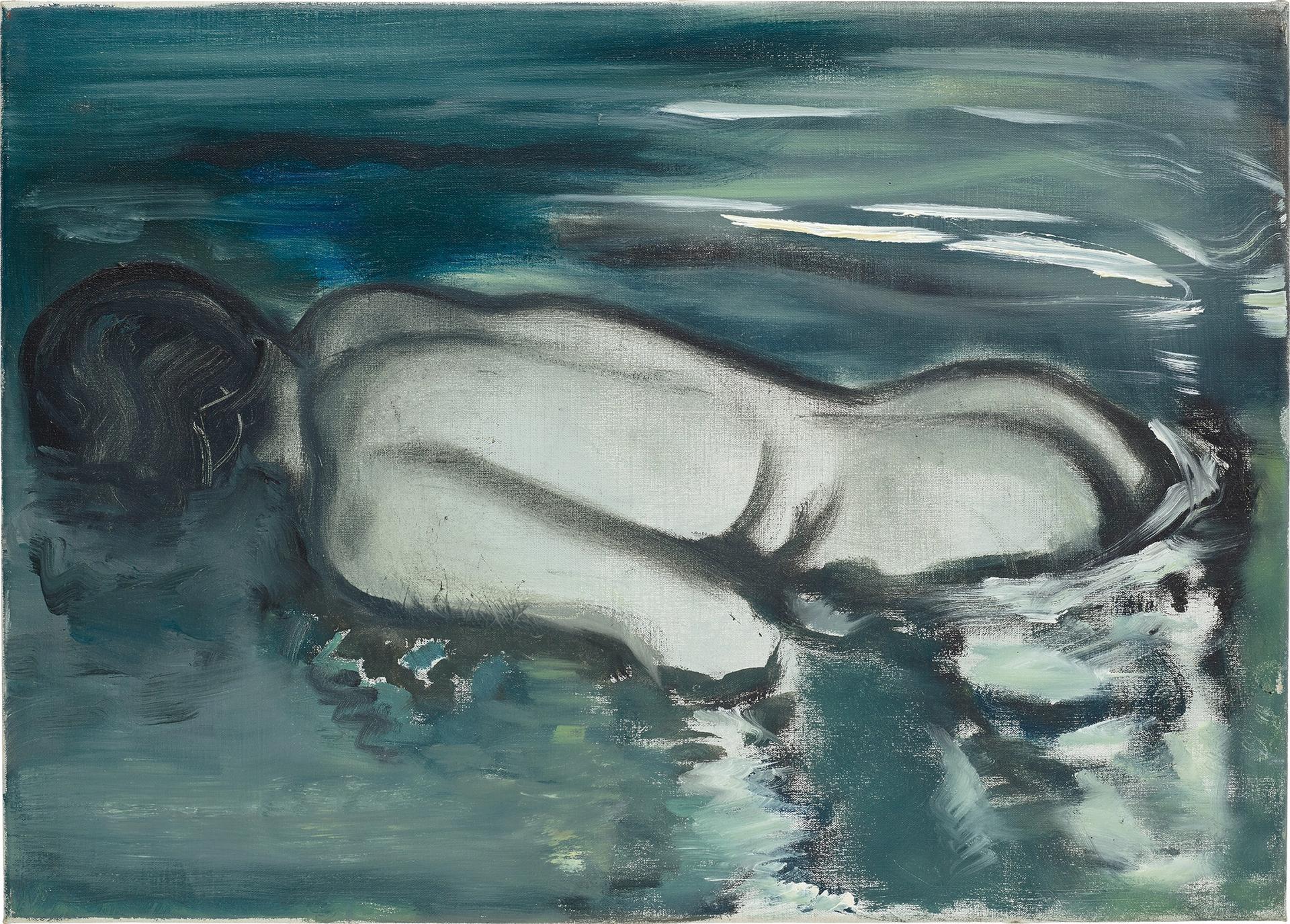The Sotheby’s-Christie’s duopoly has long looked impenetrable, but Phillips inched ever closer last night with a solid contemporary evening sale, which racked up £29.7m (£35.9m with fees).
While bidding on the phones was slow at times, causing one impatient dealer in the room to urge auctioneer Henry Highly to “come on”, there were flurries of bidding for some of the younger and less-well known artists, particularly women.
They included Lynette Yiadom-Boakye, the British painter who is fast becoming an evening sale regular and whose work carried a third party guarantee. Her masterful, syrup-hued Leave a Brick Under the Maple (2015) attracted spirited bidding, including from Asia, and sold on the phone for £650,000 (£795,000 with fees).
Institutional backing usually lends weight to an artist’s market and Yiadom-Boakye’s prices will have been consolidated by her current exhibition in the Ghanaian pavilion at the Venice Biennale as well as her Tate Britain show next spring.
A sombre painting by the South African artist Marlene Dumas, in which a woman could be bathing or lying in her watery grave, doubled its estimate to sell to Jean-Paul Engelen, Phillips’s deputy chairman for the Americas, on the phone for £1m (£1.2m with fees). Underbidding came from Dumas’s dealer, David Zwirner, and Jonathan Crockett, Phillips’s deputy chairman for Asia. Losing (Her Meaning) (1988) has been included in 18 exhibitions, but has never come to auction before.
Also fresh to market was Luc Tuymans’s Schwarzheide (1986), which attracted multiple bidders—Zwirner among others—to sell for £1m (£1.2m; est £800,000-£1m) on the phone.
Phillips has become something of a Modern art specialist in recent years, and there was a smattering of Modern masters on the block last night, although they did not perform as well as anticipated. Could the days of the (dead) white man be numbered?
Picasso’s bloated, swaggering Homme Assis (Mardi gras) from 1972, guaranteed by a third party, went to an anonymous buyer in the room for £2.55m (£3.1m with fees; est £2.5m-£3.5m). An early but atypical work from the Spanish master’s Blue Period, Vase de Fleurs (1904), did not fare any better, going below estimate for £2m (£2.4m; est £2.5m-£3.5m). Phillips will have to pick up some of the tab, having guaranteed the painting in house.

Marlene Dumas's Losing (Her Meaning) from 1988 Courtesy of Phillips
Prices for works that have too recently been on the block have either stagnated or dipped. For example, Alberto Giacometti’s small but perfectly moulded bronze bust of Diego (conceived around 1954 and cast in 1980) fetched £800,000 (£975,00) on the phone with Hughes Joffres, an adviser to Phillips’s chief executive, Ed Dolman. It last sold at Phillips in New York in May 2015 for $1.1m.
Jean-Michel Basquiat’s market looks patchy, although the material on offer this week has varied wildly in quality; 1984 is the golden year as far as his work is concerned. So his 1981 painting of baseball player Jackie Robinson was never destined to fly. It sold to an anonymous woman in the room for £3.2m (£3.8m with fees), barely making any profit for the seller who bought it at Phillips New York in May 2013 for $4.1m.
One of Basquiat’s biggest collectors—and guarantors—José Mugrabi looked restless last night, as did his adviser Adam Chinn who was seen pacing in and out of the saleroom, at one point hurrying after Mugrabi. He appeared to be bidding through Robert Manley of Phillips, who won the final lot of the night: a five-part oil stick on acetate by Basquiat for £260,000 (£471,000 with fees; est £500,000-£700,000).
Another work recently seen at auction was Christopher Wool’s untitled enamel on aluminium from 1986, which achieved £400,000 (£495,00 with fees) last night having last sold at Christie’s London in October 2015 for £422,500. Dolman notes that Wool’s prices rose very quickly, but “have settled back into something more consistent”.
He adds: “When we look across the bidding, artists that have arrived and are recognised as 20th-century greats are retaining their value. With fluctuations, there is a solidity to the market, although it hasn’t been as effervescent as before.”
So with all eyes, and paddles, on fresh talent, will Phillips continue to pursue Modern consignments? Yes, says Phillips chairman Cheyenne Westphal, “but we are still looking forward at all times”. Selling Modern and contemporary art is “not mutually exclusive”, Dolman adds. “There’s a consistent flow of styles and the Modern market is, quite frankly, extremely strong.”
Despite falling just short of its low pre-sale estimate of £31.1m, the result is Phillips’s highest total in June for a decade and within striking distance of Christie’s £38m total (£45.2m including buyer’s premium). Phillips’s sell-through rate was a healthy 89%.
“Our market share will look pretty reasonable this week, and will prove the momentum is still there,” Dolman says.
Taking all of the week’s sales into account, the London art adviser Nazy Vassegh notes that the political and economic uncertainty “is making consignment gathering in London challenging”, but that the “levelling of prices is not such a bad thing”.
She adds: “London seems to be a great centre for discovering and rediscovering artists.” Could we be on the verge of a new world order in the art market?


